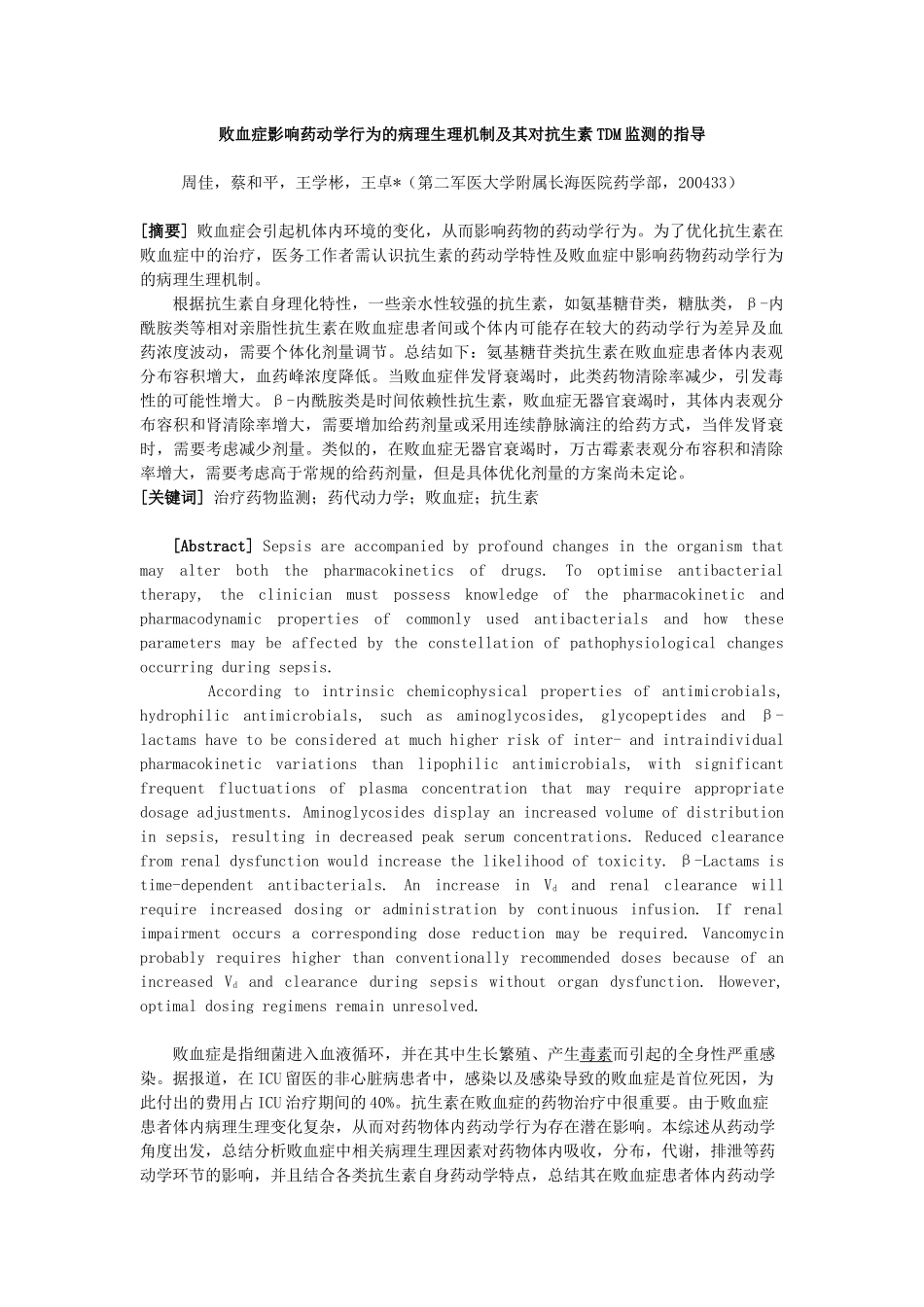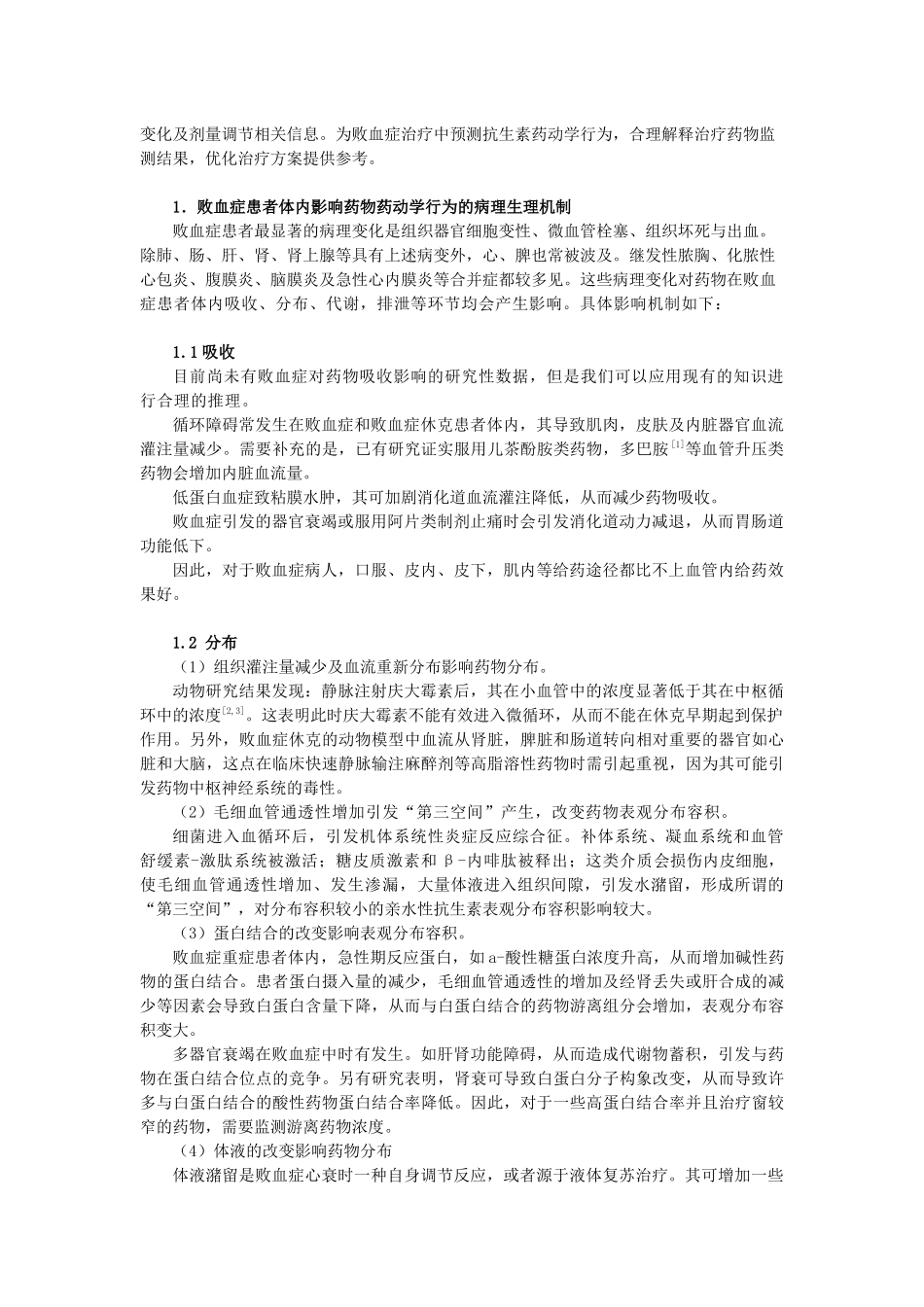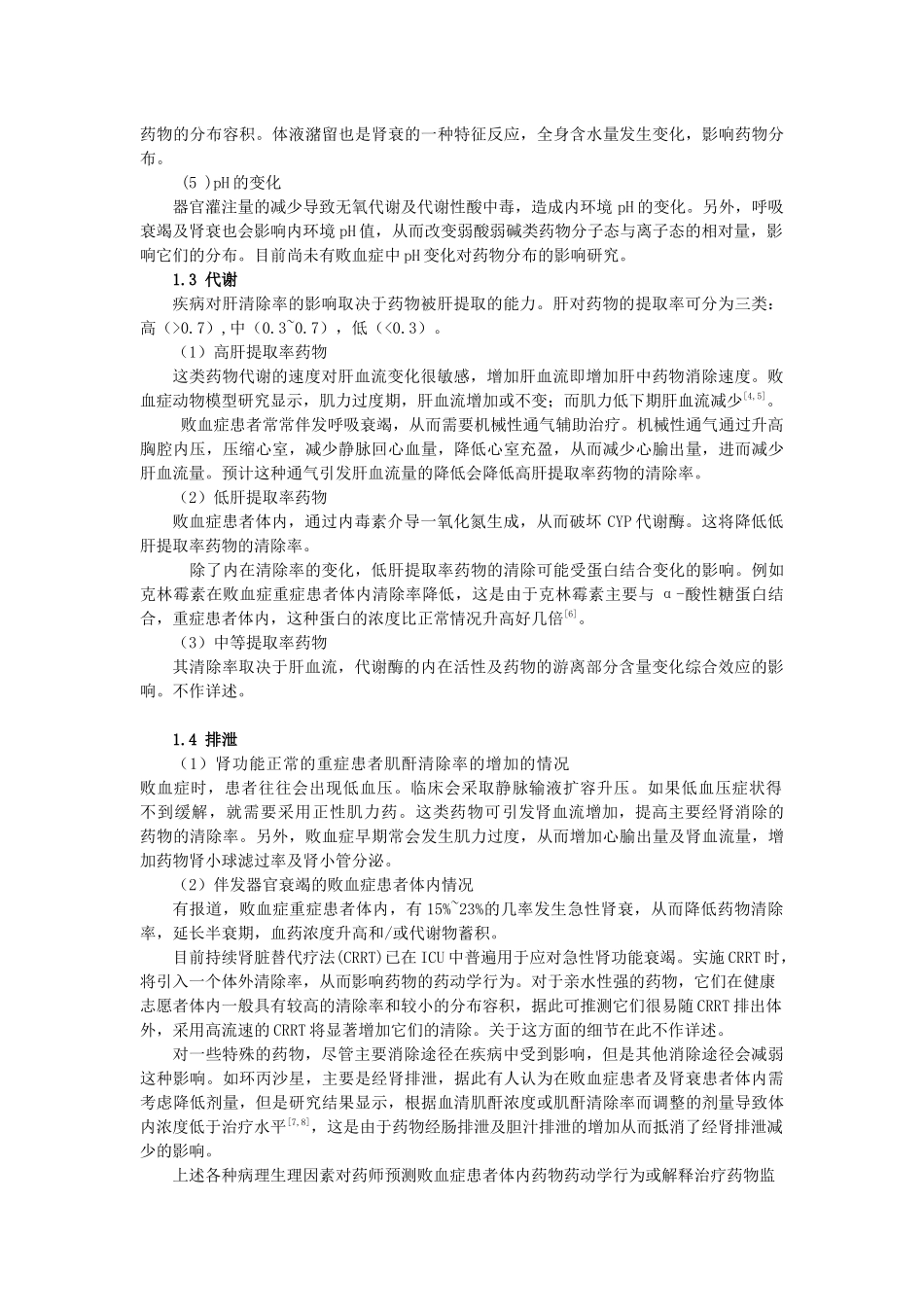败血症影响药动学行为的病理生理机制及其对抗生素 TDM 监测的指导周佳,蔡和平,王学彬,王卓*(第二军医大学附属长海医院药学部,200433)[摘要] 败血症会引起机体内环境的变化,从而影响药物的药动学行为。为了优化抗生素在败血症中的治疗,医务工作者需认识抗生素的药动学特性及败血症中影响药物药动学行为的病理生理机制。 根据抗生素自身理化特性,一些亲水性较强的抗生素,如氨基糖苷类,糖肽类,β-内酰胺类等相对亲脂性抗生素在败血症患者间或个体内可能存在较大的药动学行为差异及血药浓度波动,需要个体化剂量调节。总结如下:氨基糖苷类抗生素在败血症患者体内表观分布容积增大,血药峰浓度降低。当败血症伴发肾衰竭时,此类药物清除率减少,引发毒性的可能性增大。β-内酰胺类是时间依赖性抗生素,败血症无器官衰竭时,其体内表观分布容积和肾清除率增大,需要增加给药剂量或采用连续静脉滴注的给药方式,当伴发肾衰时,需要考虑减少剂量。类似的,在败血症无器官衰竭时,万古霉素表观分布容积和清除率增大,需要考虑高于常规的给药剂量,但是具体优化剂量的方案尚未定论。[关键词] 治疗药物监测;药代动力学;败血症;抗生素[Abstract] Sepsis are accompanied by profound changes in the organism that may alter both the pharmacokinetics of drugs. To optimise antibacterial therapy, the clinician must possess knowledge of the pharmacokinetic and pharmacodynamic properties of commonly used antibacterials and how these parameters may be affected by the constellation of pathophysiological changes occurring during sepsis. According to intrinsic chemicophysical properties of antimicrobials, hydrophilic antimicrobials, such as aminoglycosides, glycopeptides and β-lactams have to be considered at much higher risk of inter- and intraindividual pharmacokinetic variations than lipophilic antimicrobials, with significant frequent fluctuations of plasma concentration that may require appropriate dosage adjustments. Aminoglycosides display an increased volume of distribution in sepsis, resulting in decreased peak serum concentrations. Red...


